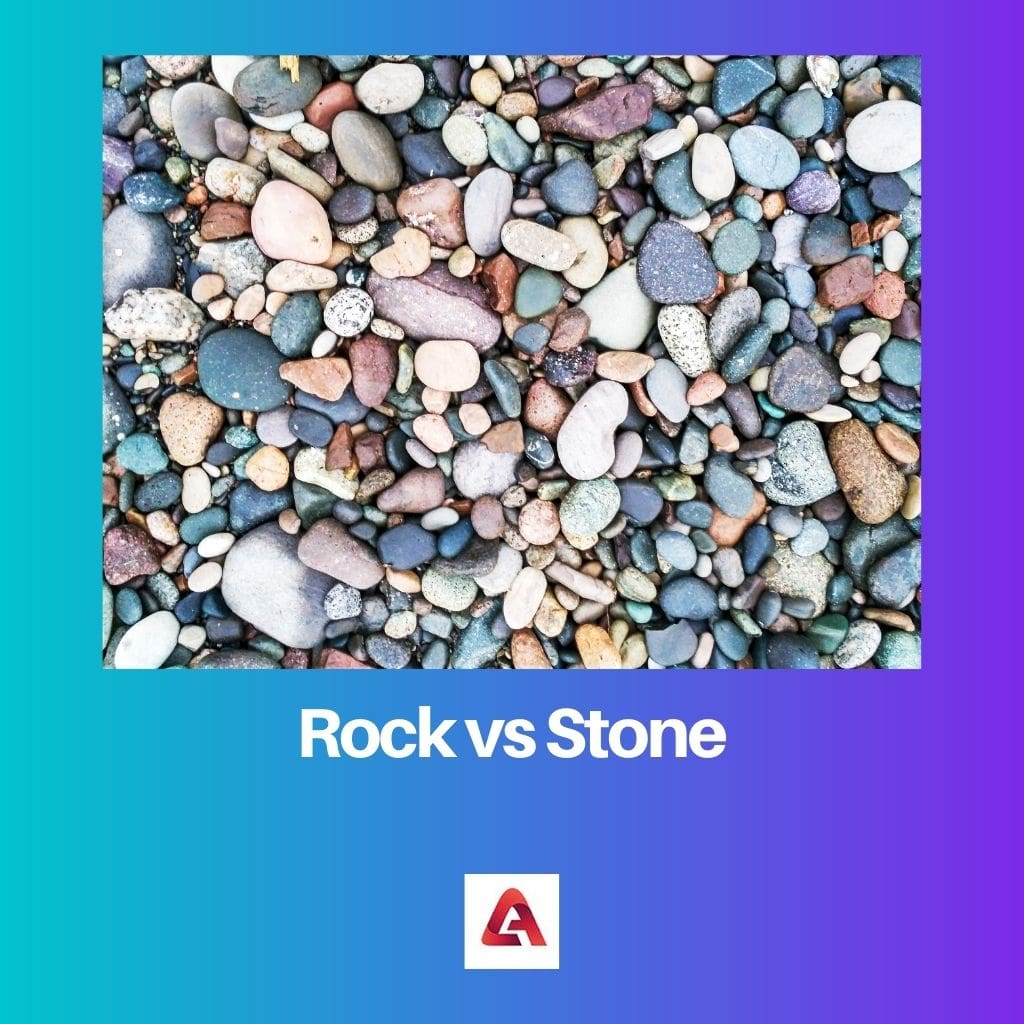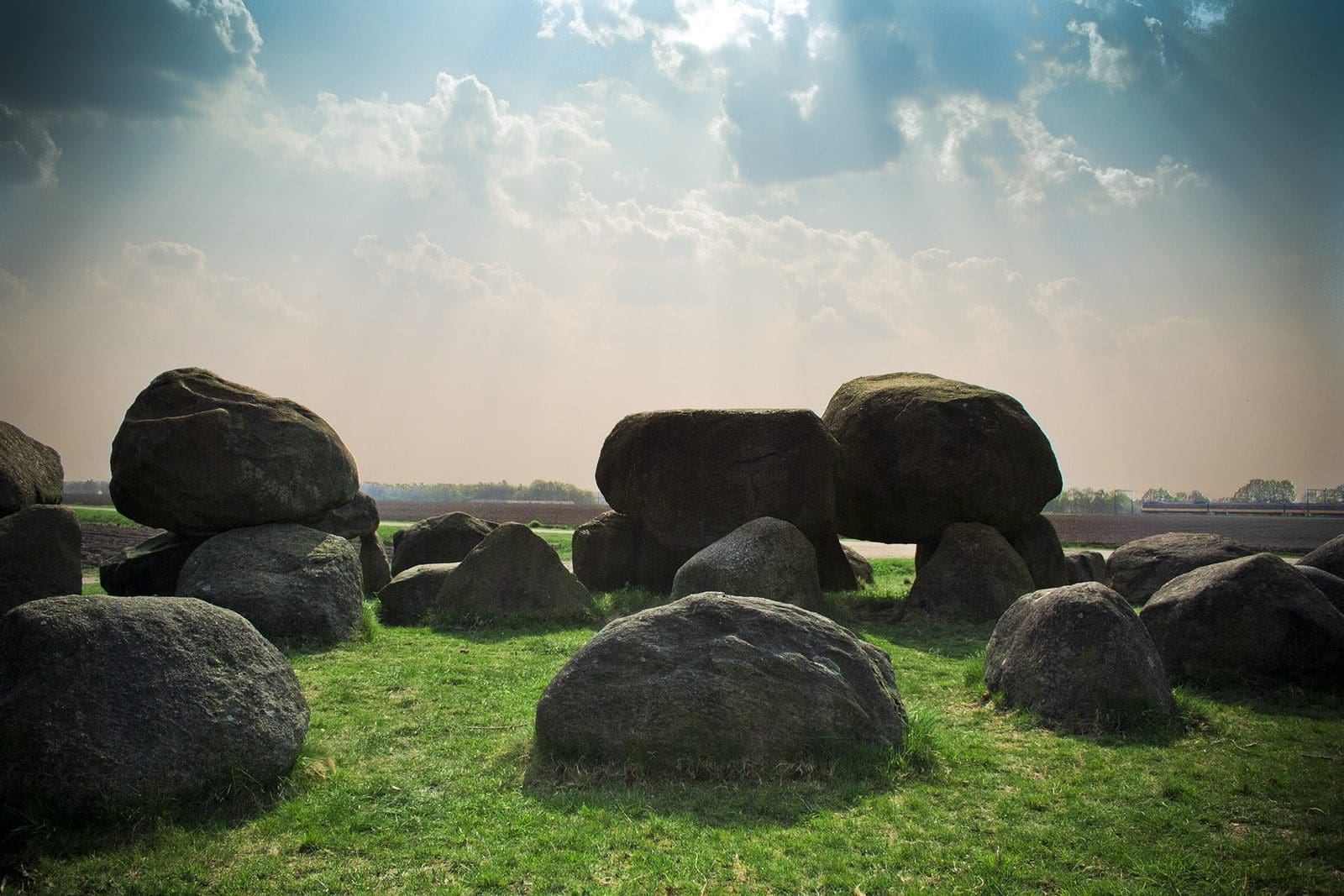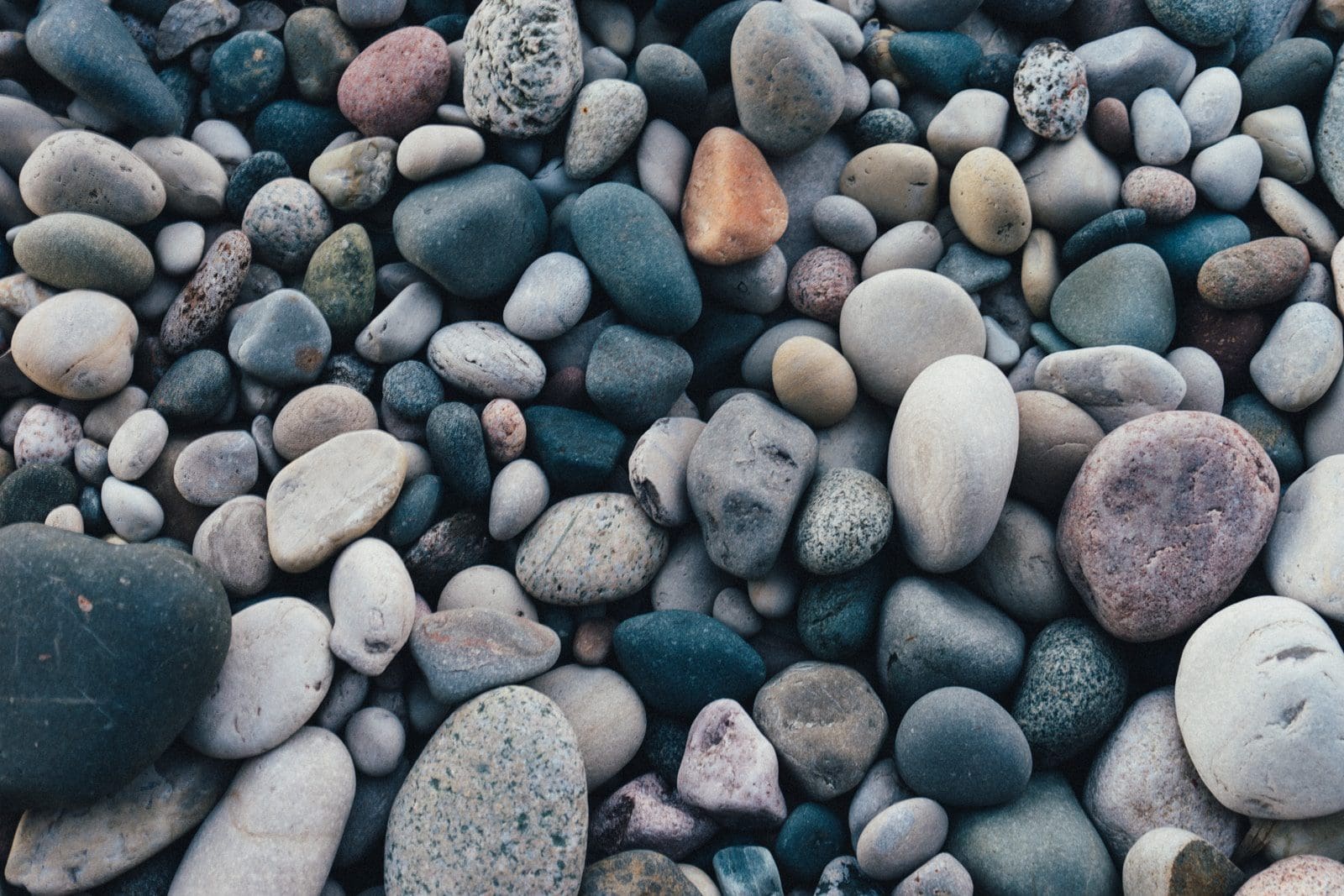Many are confused when it comes to telling the difference between a rock and a stone. Both these substances have a few similarities in their internal structure and composition.
Key Takeaways
- A rock is a naturally occurring, solid aggregate of minerals or mineraloids.
- A stone is a smaller, individual piece of rock that has been shaped or modified by natural processes or human intervention.
- Rocks form the Earth’s crust, while stones are used as building materials or for decorative purposes.
Rock vs Stone
Rock is a term that is used to describe any solid or naturally occurring substance made up of minerals. It can include things like sandstone, granite, etc. Stone is a type of rock that is hard, durable, and used for construction or decoration. An example of stone is marble.

Rocks are naturally occurring solid mineral materials forming part of the earth’s crust. Rocks are a collection of other mineral grains cemented together to form a large structure.
Stones are complex substances that combine to help form the structure of large rocks. They are created with the help of mineral matter and are small in size.
Comparison Table
| Parameters of comparison | Rocks | Stones |
|---|---|---|
| Geological definition | Rocks are naturally occurring solid mineral materials that form a part of the earth’s crust and are found almost everywhere. | Stones are complex substances and are considered to be combinations of extracted minerals such as sandstone or limestone. |
| Size/Weight | Rocks are seen to be larger and heavier in comparison to stones. Boulders come under the category of rocks. | Stones are smaller and lighter in comparison to rocks. Smaller mineral materials come under this category. |
| Uses | Rocks consist of minerals useful in developing technologies such as cosmetics, cars, roads and other appliances. | Stones have a variety of uses, such as in construction sites for buildings, walls, concrete, asphalt and other building products. |
| Properties | The properties depend on the type of mineral material, and they have lustre, great size and weight, and texture. | Stones have either layered or unlayered structures, different porosity and absorption, hardness, and different texture. |
| Relation | Rocks are broken down into smaller pieces to be utilised, which are called stones. | Stones are complex substances that combine to help form the structure of large rocks. |
What is Rock?
Rocks are the foundation upon which humankind has built its concrete jungle. They are naturally occurring solid mineral materials forming part of the earth’s crust.
Rocks are found in many shapes and sizes, and if looked at with a broad perspective, they are more substantial compared to other complex mineral substances such as stones.
There are three main classes or types of rocks present in the earth’s crust or found deep inside the world, and they are as shown below –
- Sedimentary rocks – formed due to other existing organic or rock material. These include coal, limestone, flint, sandstone, halite, etc.
- Metamorphic rocks have been changed from their original structure or form by applying immense heat and pressure. These include gneiss, phyllite, schist, slate, etc.
- Igneous rocks are formed when minerals or rocks are heated up and then cool down after a while and solidify. These include dacite, granite, pegmatite, etc.
The physical property of rocks ultimately depends on their internal composition and the minerals that reside within them. The generic features one can observe just by looking at them are that they have lustre, great size and weight, and texture.
Rocks are used in many products that help create technologies such as cosmetics, cars, roads and other appliances. It all depends on the mineral that can be extracted from the rock.

What is Stone?
Stones are small complex substances that are considered to be combinations of extracted minerals such as sandstone or limestone. These substances are combined either naturally or through cementing them together to form large rocks.
Stones are the building blocks of rocks, and due to their small size, they can be found almost everywhere on the earth’s crust.
Stones have many visible physical properties, such as being smaller and lighter than other organic mineral matter.
They are seen to have either a layered or unlayered internal structure, different porosity and absorption, hardness, and different texture.
There are a few different types of stones that can be found on the crust, and they are –
- Sedimentary stones
- Metamorphic stones
- Igneous stones
- Artificial stones
Stones are also helpful when creating building materials for construction sites. They help build buildings, walls, concrete, asphalt and other construction products.

Main Differences Between Rock and Stone
- Rocks are naturally occurring solid mineral materials that form a part of the earth’s crust, while stones are considered to be combinations of extracted minerals such as sandstone or limestone.
- Rocks are broken down into smaller components(stones) to be utilised for construction, while stones are combined to build rocks.
- Rocks have features such as lustre, significant weight and size, and texture. In contrast, stones have porosity and are absorbent; they are complex, layered, and unlayered, depending on internal composition.
- Rocks are larger and heavier in comparison to stones.
- Rocks are used for developing cosmetics, roads and cars with the help of minerals present inside them, while stones can be used for making buildings and walls.


The article is very informative and educative, providing a deep insight into the formation and uses of rocks and stones.
Absolutely, the comparison table is particularly helpful in understanding the differences.
This article provides a clear distinction between rocks and stones, helping many people understand the geological differences between the two.
Agreed, the detailed explanation makes it easier to differentiate between rocks and stones.